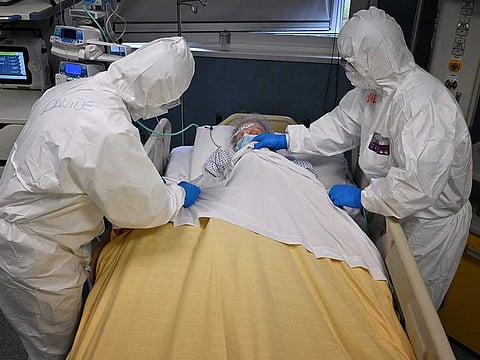Italy to relax lockdown in key step for Europe’s COVID-19 fightback
Prime Minister Conte aims to roll out a detailed restart programme beginning on May 4

Rome: Italy will present a plan this week to ease its rigid lockdown, joining Germany, France and Austria in pursuing a gradual return to normality as coronavirus infection rates fall and pressure mounts to reopen businesses.
Prime Minister Giuseppe Conte aims to roll out a detailed restart program beginning on May 4, indicating that the process will take time to mitigate risks of re-igniting the spread of the disease.
“I would like to be able to say: we will open everything. Immediately. Tomorrow morning,” Conte said in a post on Facebook. “But a decision like that would be irresponsible” and could “jeopardise all the efforts we’ve made until now.”
Italy’s commitment to ease restrictions is an important marker in Europe’s battle with the pandemic. The original centre of the continent’s outbreak suffered the most deaths after the US and has the third-most cases in the world.
With more than 100,000 fatalities in the region, Europe’s leaders are seeking to strike a balance between saving lives and securing jobs. The first steps to relax restrictions in Austria, Denmark and Norway are putting pressure on others to follow suit, despite the lack of treatments or a cure.
The current containment measures in Italy - in force since mid-March - currently shutter all non-essential businesses, ban movements within the country, and all but confine people to their homes except for buying food, going to work and seeking medical help.
Prime minister weighing options
Conte is juggling caution from scientific and public-health advisers, who insist the decline in new cases is still slow and relaxed restrictions could trigger a new outbreak, with demands from businesses and regional governors to restart the economy.
Similar pressures are playing out in capitals across Europe, and leaders are pleading for patience.
Because of contagion risks, Munich cancelled its famed Oktoberfest for the first time since World War II, the latest sign that disruptions will linger for months to come. The move deals a $1.3 billion blow to the local economy, according to the city’s mayor.
“We agreed that the risk is simply too great,” Bavarian Premier Markus Soeder said. “We are living in different times and living with corona means living carefully.”
Small stores open in Germany
Germany, which had the smallest rise in new cases this month in the 24 hours through Tuesday morning, started to allow small stores and some other retailers to reopen on Monday and will weigh next steps on April 30. France will unveil plans within two weeks to progressively lift restrictions amid falling numbers of patients in hospitals and in intensive care.
The European Union cautioned against complacency. Health Commissioner Stella Kyriakides said containment efforts that end too quickly and aren’t coordinated across the bloc could threaten the sacrifices made by citizens and medical staff.
As part of efforts to develop a vaccine, European Commission President Ursula von der Leyen will host an online event on May 4 to generate funding pledges and mobilize investment necessary for research into effective treatments, she told the European Parliament’s health committee.
The pressures facing policy makers are evident in Austria. Despite being one of the first European nations to ease restrictions, the economy may take as long as three years to recover, according to a group of leading economists. Unemployment and state-wage support have skyrocketed, with almost every third worker receiving some form of subsidy due to the pandemic.
Cabinet working with experts
Conte said that his cabinet is working with various experts to coordinate the so-called “phase 2,” when Italians will have to adapt to the lingering threat of the virus, such as maintaining social-distancing guidelines and wearing masks in public.
The plan could include a full reopening of stores on May 11 or more likely May 18, La Repubblica reported. Full movement for citizens would only come after that, the newspaper said.
The lockdown is crippling an already fragile and debt-ridden economy. In an attempt to obtain some relief, Conte will make another push for so-called coronabonds, or joint debt issuance, at a virtual gathering of European Union leaders on Thursday.
Italy’s easing plan will be laid out at the national level but will take into account regional differences, said Conte, who will speak to both houses of parliament later on Tuesday.
“We cannot abandon the line of maximum caution, also on a restart,” Conte said in his post. “We cannot make impromptu decisions just to follow part of public opinion or to satisfy the requests of some production sectors, individual companies or specific regions.”
Sign up for the Daily Briefing
Get the latest news and updates straight to your inbox







